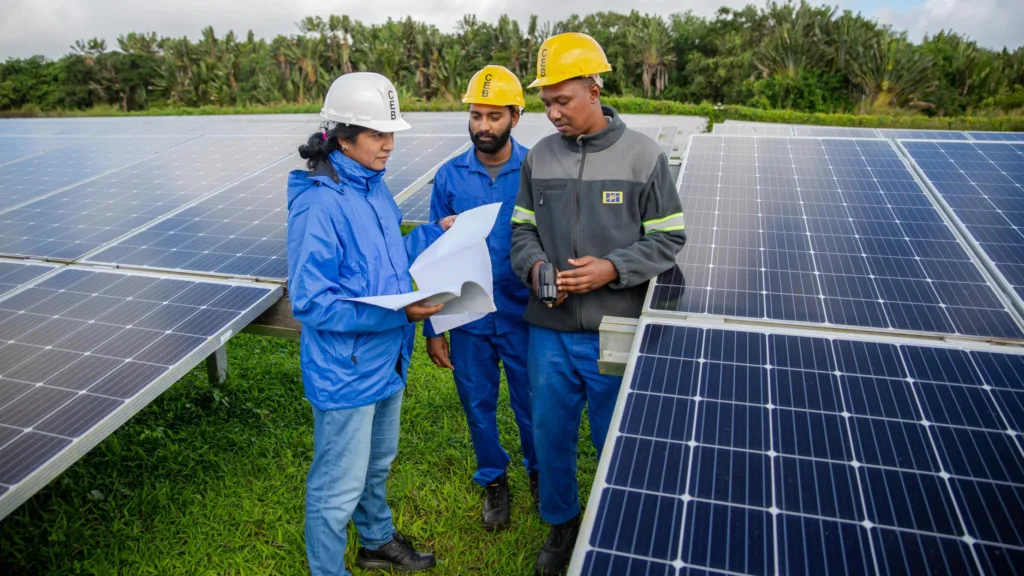The latest data on SDG 7 paints a frustrating picture: for the first time in a decade, progress on energy access has reversed, with population growth outpacing new connections. In sub-Saharan Africa alone, 570 million people live without access to electricity, three million more than in 2021. Furthermore, 1.18 billion people worldwide still live in energy poverty , highlighting the need to look beyond connections to energy access, to include quality, reliability and affordability. These figures underscore the urgent need for targeted interventions and increased financing to close the urban-rural gap and underinvestment in energy infrastructure in many African countries.
Under SDG 7, countries committed to working towards universal access to electricity by 2030. Given current trends and the widening access gap, this goal now seems almost unattainable. To get back on track, national governments and the international community must find a way to channel funds to where they are needed most, and as quickly as possible. In recent years, it has been recognized that decentralized renewable energy has the potential to electrify a significant portion of sub-Saharan Africa’s unelectrified population by 2030, particularly in rural areas. However, progress has been slow due to the large investments required, which are hampered by perceived high risks, political uncertainty, and inadequate infrastructure. So despite this potential, we are still far from reaching the planned USD 30 billion in annual investments . The private sector should play a crucial role in bridging this gap, but investments are lagging behind due to these risks, leading to high financing costs and unaffordable tariffs for many communities.
The situation is particularly challenging for mini-grids, which, as infrastructure-based technologies, are highly dependent on a stable, predictable and enabling environment. As a result, mini-grids face significant barriers to market development, financial investment and social acceptance compared to stand-alone systems, which are privately owned and less dependent on institutional stability. Therefore, the success of renewable mini-grids will largely depend on effective risk reduction measures and enhanced coordination between the public and private sectors.
DREI: A framework to reduce the risks associated with investments in renewable energies
To address these challenges, UNDP and ETH Zurich have developed a framework to help policymakers address the risks perceived by private investors in renewable energy investment in emerging markets. The Derisking Renewable Energy Investment (DREI) framework is an innovative theory of change and methodology to help governments select sets of public instruments to promote private investment in renewable energy technologies. These sets include policy instruments to address systemic risks, financial derisking instruments that transfer risks from the private to the public sector, and direct financial incentives to reward investors willing to take on the residual risks that often hamper investment. Ultimately, the DREI supports policymakers by providing a structured analysis that demonstrates how each stakeholder group in the sector influences investor risks and presents strategies to address these risks.
We have now piloted the DREI framework and applied it to battery-powered and solar PV-powered mini-grids in several countries. Here are some examples of how the DREI framework is helping to bridge the gap between the public and private sectors to drive the deployment and expansion of solar mini-grids:
1. Developing derisking action plans. Recently, UNDP supported Burkina Faso, Mali, and Niger in applying the DREI framework to develop country-specific action plans. These plans outline key derisking activities, identify stakeholders to be involved, and provide initial cost estimates for implementing derisking instruments. This collaborative effort, validated through stakeholder workshops and endorsed by two of the three energy directorates, paved the way for increased private sector engagement.
2. Facilitating public-private dialogue. In Burkina Faso, analysis revealed that digital risks significantly hamper remote monitoring for mini-grid developers. To address this risk, UNDP facilitated discussions with telecommunications companies to expand their rural reach, improve monitoring capabilities, and explore telecommunications as an anchor load for mini-grids. This collaboration underscores the importance of coordinated public-private efforts to mitigate risks and support mini-grid deployment. The DREI framework addresses immediate challenges and helps define a path for sustainable energy solutions in underserved regions.
3. Informing national electrification policy. DREI action plans have emphasized the critical need for national electrification strategies. Prior to November 2023, Burkina Faso lacked a comprehensive strategy, leading to significant risks for the energy market due to the unclear role of mini-grids. Stakeholder engagement revealed that this absence was a major obstacle. The adoption of a DREI action plan by Burkina Faso’s energy directorate marked a turning point, facilitating the development of a rural electrification strategy and highlighting the importance of strategic planning and coordination to address energy challenges and attract mini-grid investments.
Under UNDP’s Africa Mini-Grids Programme , similar analyses are planned for 21 countries to identify potential interventions and actions needed to reduce perceived risks of renewable energy investments. These efforts feed into planned national dialogues in the AMP countries on key issues that need to be addressed between the public and private sectors to advance the solar mini-grid sector. By implementing the DREI framework in these countries, we aim to help transform the mini-grid investment landscape, significantly reduce risks, and catalyze the flow of private capital into the sector. Our goal is to accelerate progress towards universal energy access by demonstrating that strategic and well-coordinated efforts can indeed unlock private capital for solar mini-grids and ultimately improve the lives of millions of people.
